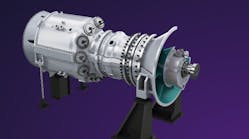Lehigh Hanson hosting $4.8M Carbon Capture study at new Cement production plant
Building materials firm Lehigh Hanson will study the addition of carbon capture technology at its new cement plant near completion in Indiana.
The U.S. Department of Energy’s Office of Fossil Energy and Carbon Management (FECM) is providing about $3.7 million to fun a front-end engineering design study retrofitting Mitsubishi Heavy Industries’ carbon capture technology at the new plant in Mitchell.
Lehigh Hanson also will contribute $1.1 million to the project to reduce the carbon footprint of the Lehigh cement facility. Sargent & Lundy will handle commercial engineering support.
“We believe that carbon capture technology will play a significant role in achieving carbon neutrality and we are very excited to take the next steps in this journey at our Mitchell cement plant,” Chris Ward, CEO of Lehigh Hanson Inc., said.
See EnergyTech's full coverage of Decarbonization in the Cement Industry
Stories on Carbon Capture as part of Many Roads to Net Zero
The new Lehigh Cement plant is due to begin operations early next year. The addition more than triples current capacity and should utilize alternative fuels and raw materials as part of the decarbonization aim.
The proposed project will capture and sequester approximately two million metric tons of CO2 per year or 95% of the CO2 emissions from the new cement facility. The primary objective of the FEED study is to evaluate the cost and performance of the overall project, including site-specific considerations for full-scale implementation.
The U.S. and global cement, concrete and building materials industries have been accelerating decarbonization efforts in the recent years. Saint-Gobain has achieved a number of energy efficiency measures at many of its North American wallboard and gypsum plants, while LaFarge, FLSmidth and others have introduced new processes to reduce greenhouse gases in production.





